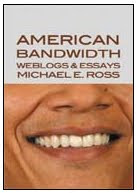On Monday we discovered just how much of two minds, of at least two distinct American realities the American media can be on matters of who advances in the nation’s newsrooms and who doesn’t, and the curious calculus by which that’s decided.
Richard Prince’s excellent Journal-Isms column (a longtime fixture of the Maynard Institute Web site and most recently syndicated in The Root) broke it down in one place for readers on Monday — Pulitzer Day.
Among the winners of the most prestigious and recognized prize in American journalism were The Denver Post, which won for feature photography; and for the Philadelphia Daily News, which won for investigative reporting.
Greg Moore is the editor of The Denver Post; Michael Days is executive editor of the Daily News.
For the first time, mainstream American dailies helmed by not one but two African American editors won two of the more coveted Pulitzer Prizes, the recognition for the two elements of modern print journalism — powerful photography and the compelling shoe-leather public-interest news story — that still resonate with the American public (or the percentage of the public that still read newspapers).
It was a good day right after a bad one.
◊ ◊ ◊
See, on Sunday, we got the results of the 2010 newsroom census from the American Society of Newspaper Editors, its findings a perfect distilling reason why black Americans, and especially black journalists, often characterize progress as one step forward, one step back (or is it two steps back? We forget sometimes).
The ASNE newsroom report found that, overall, the percentage of minorities in newsrooms was 13.26 percent, a drop of .15 of a percentage point from a year ago.
But black journalists got hit the hardest of everyone. The ASNE survey found there were 929 fewer African American journalists than were recorded in 2001, a falloff of 31.5 percent. The ranks of Native American journalists fell by 52, or 20.9 percent in the same time. Hispanic representation declined by 145, or 7 percent. The number of white journalists fell by 10,400, or 20.9 percent.
Newsroom jobs held by black journalists were cut by 19.2 percent in 2009, nearly six percentage points higher than the previous year.
◊ ◊ ◊
In a statement released Tuesday, Kathy Y. Times, the president of the National Association of Black Journalists (NABJ), called it “a travesty that minority journalists would be targeted disproportionately in staff cuts. Despite the economy we must keep our newsrooms and voices at least on parity with the communities we serve.”
Communities are not of one color and neither should newsroom decision makers,” she said.
“It’s about accuracy,” NABJ Diversity Director Bobbi Bowman said of the census objective, in the same NABJ statement. “Can you accurately cover your community if you have a newsroom that doesn’t look like your community?”
“Readers are very smart and readers know whether or not their newspaper is covering news that is important and relevant to them,” she said Tuesday.
And we might have known this would follow. The NABJ said on Tuesday that its board "is scheduled to meet in the Washington, D.C.-area this weekend to discuss the recent ASNE findings and develop an action plan for improving newsroom hiring and retention of black journalists."
This latest broadside on the media’s institutional lethargy could well be the moment of the gauntlet throwdown. As media orgs rebound from the economy and begin rehiring, as many of the bigger players start to conceptualize how to cover the 2010 race (and begin to decide who gets to do it); as the country grapples again with race as the volatile, powderkeg subtext for everything political in the country ... watch for fireworks, or maybe just some overdue surprises.
Tuesday, April 13, 2010
Subscribe to:
Post Comments (Atom)



.jpg)
.jpg)





No comments:
Post a Comment